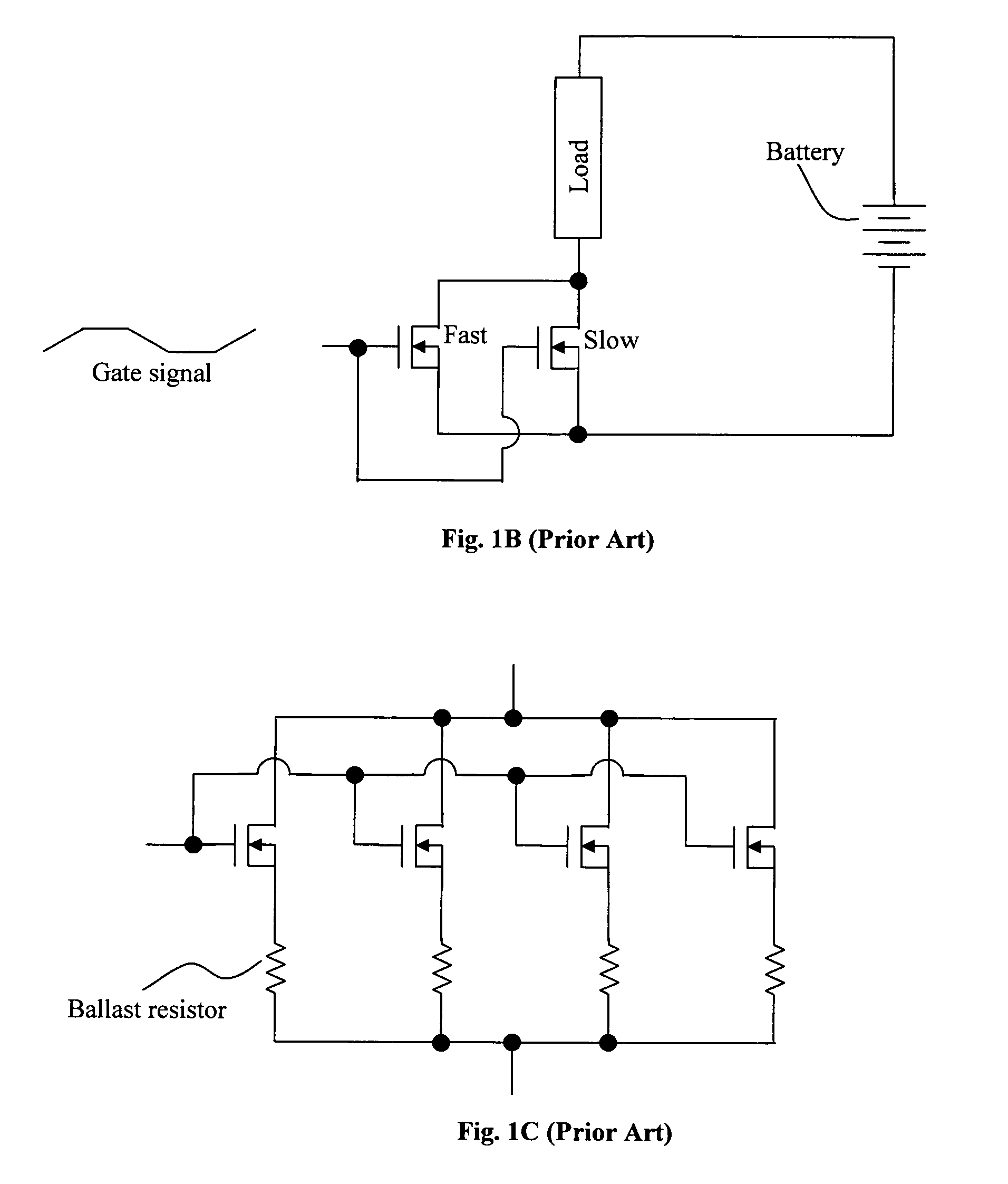Robust semiconductor power devices with design to protect transistor cells with slower switching speed
a technology of semiconductor power devices and transistor cells, applied in electronic switching, relays, pulse techniques, etc., can solve the problems of device damage, relatively large current and voltage spikes, and transistor cells with slower switching speed in power devices are often vulnerable to over-current damage, so as to improve device configuration and reduce significant rdson increase , the effect of slowing down
- Summary
- Abstract
- Description
- Claims
- Application Information
AI Technical Summary
Benefits of technology
Problems solved by technology
Method used
Image
Examples
Embodiment Construction
[0019]Referring to FIG. 2 for a circuit diagram for illustrating the improved circuit configuration to resolve the difficulties encountered in the convention semiconductor power devices implemented to switch on and off an electronic device. The semiconductor power device includes a first MOSFET 100-1 and a second MOSFET 100-2 connected in parallel and each receives a gate signal to function as a switch. The first MOSFET 100-1 is a fast switch and a second MOSFET 100-2 as a slow switch. In order to protect the slower switching MOSFET 100-2, a ballasting resistor 110 is added to the second MOSFET 100-2. When a gate signal is received to turn off the electric current, the first MOSFET 100-1 is turned off first while the second MOSFET 100-2 is a slower switching MOSFET and still remains at an on state. In this embodiment, a gate resistor 105 is added to the second MOSFET 100-2. The gate resistor 105 along with the natural capacitance of the gate, form a resistor-capacitor (RC) circuit. ...
PUM
| Property | Measurement | Unit |
|---|---|---|
| gate voltage | aaaaa | aaaaa |
| voltage | aaaaa | aaaaa |
| concentration | aaaaa | aaaaa |
Abstract
Description
Claims
Application Information
 Login to View More
Login to View More - R&D
- Intellectual Property
- Life Sciences
- Materials
- Tech Scout
- Unparalleled Data Quality
- Higher Quality Content
- 60% Fewer Hallucinations
Browse by: Latest US Patents, China's latest patents, Technical Efficacy Thesaurus, Application Domain, Technology Topic, Popular Technical Reports.
© 2025 PatSnap. All rights reserved.Legal|Privacy policy|Modern Slavery Act Transparency Statement|Sitemap|About US| Contact US: help@patsnap.com



